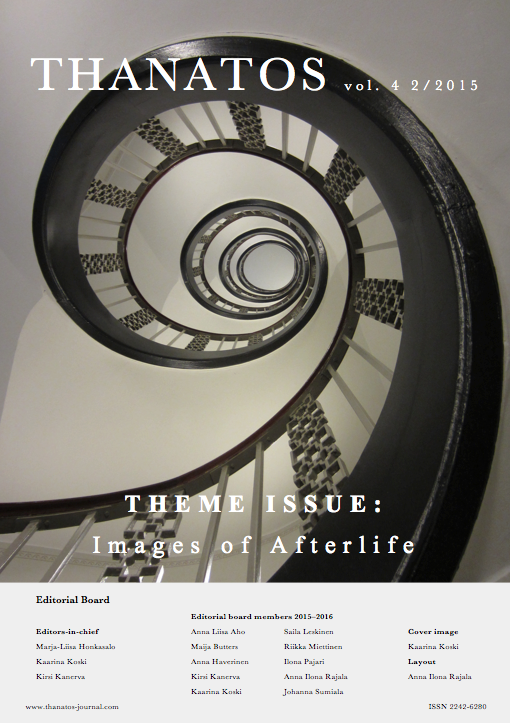Fame after Death: The Unusual Story of a Finnish Mummy and Difficulties Involving its Study
Abstrakti
Kuolemanjälkeisestä maineesta: epätavallinen tarina suomalaisesta muumiosta ja sen tutkimiseen liittyvistä ongelmista Viileä, hyvin tuulettuva ympäristö vanhojen suomalaisten kirkkojen lattioiden alla luo olosuhteet luonnolliselle muumioitumiselle kirkkohaudoissa. Hyvänä esimerkkinä tällaisesta säilymisestä voidaan pitää 1600-luvun alkupuolella eläneen Kemin seurakunnan kirkkoherran Nikolaus Rungiuksen muumiota. Kirkkoherra kuoli vuonna 1629 ja hänet haudattiin Suomen Lapissa sijaitsevan Keminmaan vanhan kivikirkon alle. Hänen muumioitunut ruumiinsa on seurakunnan toimesta ollut näytteillä 1700-luvulta lähtien, minkä jälkeen kirkkoherra Rungius – jo eläessään paikallisten kunnioittama kirkonmies – saavutti laajalle levinneen kuolemanjälkeisen maineen. Hänen ruumistaan tuli merkittävä keino rohkaista ja lujittaa ihmisten uskoa. Muumio on säilyttänyt ihmismuotonsa, mutta menettänyt oikeanpuoleisen kyynärvartensa. Sen lisäksi vuonna 2011 suoritettu tietokonetomografia paljasti, ettei muumion pää ollut normaalisti kiinni torsossa. On epäselvää, milloin ja miten pää on irronnut, mutta sen irtoaminen herätti epäilyksen, että niskan vahingoituttua pää oli saattanut pudota maahan ja rikkoontua. Olikin pohdittava, onko muumion pää todellakin kirkkoherra Rungiuksen, sillä kirkkoherran päättömyys olisi epäilemättä nopeasti johtanut pään korvaamiseen jollain toisella muumioituneella päällä seurakuntalaisten uskon vaikutusvaltaisen kannustimen säilyttämiseksi.
Tiedostolataukset
Julkaistu
Numero
Osasto
Lisenssi
Copyright (c) 2023 Tiina Väre, Milton Núñez, Jaakko Niinimäki, Juho-Antti Junno, Sirpa Niinimäki, Rosa Vilkama, Markku Niskanen

Tämä työ on lisensoitu Creative Commons Nimeä-EiKaupallinen-EiMuutoksia 4.0 Kansainvälinen Julkinen -lisenssillä.





